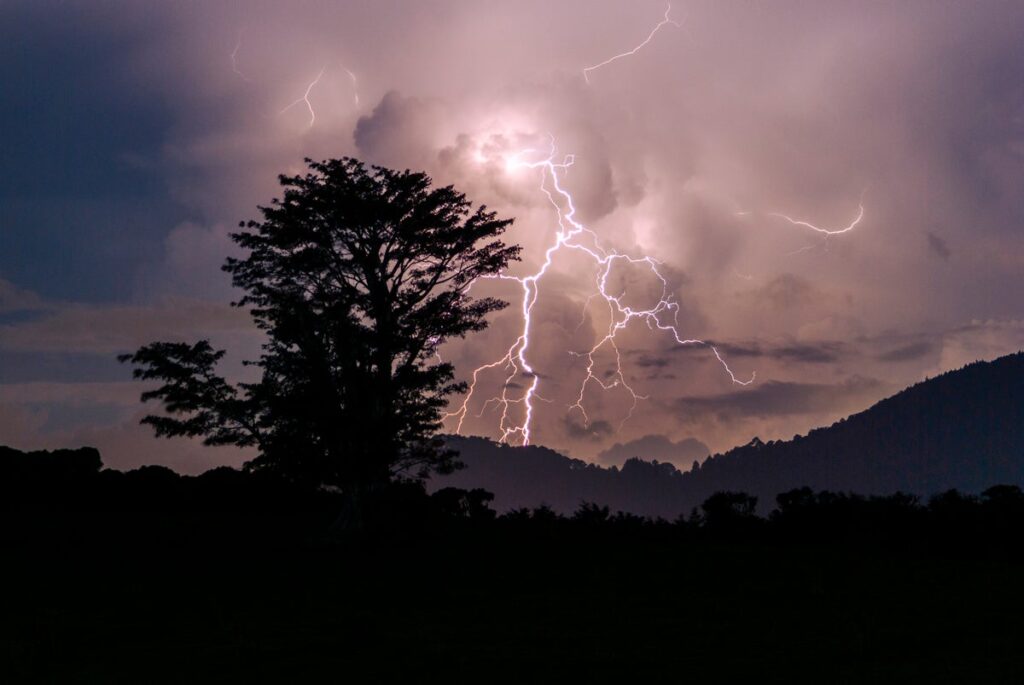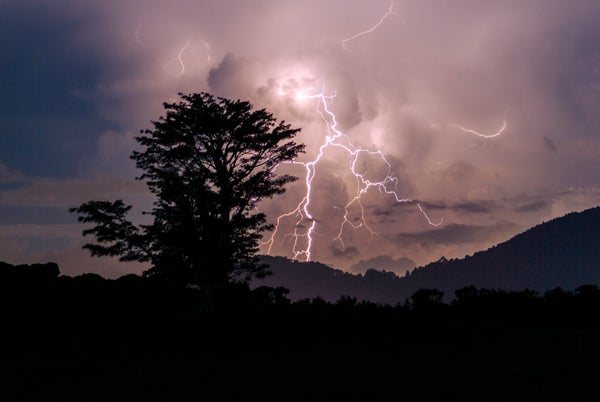Why These Tropical Timber Love a Lightning Strike

Why These Tropical Timber Love a Lightning Strike
One species of tropical tree appears not solely to outlive lightning strikes but in addition to thrive due to them

Being struck by lightning is one thing people usually attempt to keep away from. However for a minimum of one tropical tree species, this doesn’t damage—and may even be an excellent factor.
Scientists have lengthy believed that being hit by lightning might have solely adverse results on timber. “Your best-case state of affairs is that you just’re sort of okay, and your worst-case state of affairs is: you explode in 1,000,000 bits,” says Evan Gora, a forest ecologist on the Cary Institute of Ecosystem Research in New York State. However after spending a few years learning the results of lightning on rainforests, Gora started questioning whether or not timber couldn’t solely survive this often lethal occasion but in addition truly get some sort of benefit from it.
To search out out, he and his colleagues spent a number of years following the destiny of 93 timber from numerous species within the rainforest of central Panama once they have been immediately struck by lightning. 9 have been from a species generally known as the almendro (Dipteryx oleifera), a forest large native to Central and South America that may develop as much as 165 toes tall. After the timber have been struck, the researchers continued to observe those that survived the shock, checking their total situation and noting whether or not the lightning killed neighboring timber and any parasitic vines rising on them.
On supporting science journalism
Should you’re having fun with this text, think about supporting our award-winning journalism by subscribing. By buying a subscription you’re serving to to make sure the way forward for impactful tales concerning the discoveries and concepts shaping our world at this time.
The outcomes confirmed that the almendro timber have been very proof against lightning and minimally broken in contrast with nearly all the opposite tree species, which have been severely broken—64 p.c of the latter timber died inside two years of being struck. A couple of different massive species additionally survived the strikes and might need benefitted as nicely, however lightning had not struck sufficient of those species for the researchers to make certain.
Most of the timber that had surrounded the almendros—competing with the species for water and vitamins—have been killed by lightning that unfold by way of their branches after it hit the D. oleifera timber. This left extra sources and house for the latter. Lightning strikes on the almendros additionally lowered the common variety of parasitic vines on a tree by 78 p.c, by killing them. These vines climb on high of the timber to “steal” gentle.

A Dipteryx oleifera tree simply after being struck by lightning in 2019 (high) versus two years later (backside). The tree survived the strike with minimal injury, and benefited from having its parasitic vines and competing neighbors eliminated by the strike.
Evan Gora / Cary Institute of Ecosystem Research
Outfitted with knowledge on lightning strike frequency and the timber’ survival charges after reaching a sure measurement, the workforce used computer systems fashions to estimate {that a} typical almendro is probably going struck by lightning about 5 occasions throughout its 300-year lifespan. Then, by working simulations utilizing knowledge on particulars similar to how the timber develop and reproduce, the researchers confirmed that lightning strikes appear to be nearly a necessity for the timber. With out the advantages the strikes deliver, “they’d not dwell as lengthy,” Gora says.
The researchers additionally speculate that the almendro might need developed to entice lightning—or a minimum of to not keep away from it, as most different timber have. D. oleifera’s extensive crown and tall peak, which improve its likelihood of being hit, make it a dwelling lightning rod. And it would resist injury by being extra electrically conductive than different tree species round it. Gora thinks related talents to learn from lightning could be widespread throughout different species and forms of forests.
Allan Carroll, a disturbance ecologist on the College of British Columbia, who wasn’t concerned within the analysis, says, “The findings of the examine are fairly novel and make a big contribution to our data of plant evolution.”







